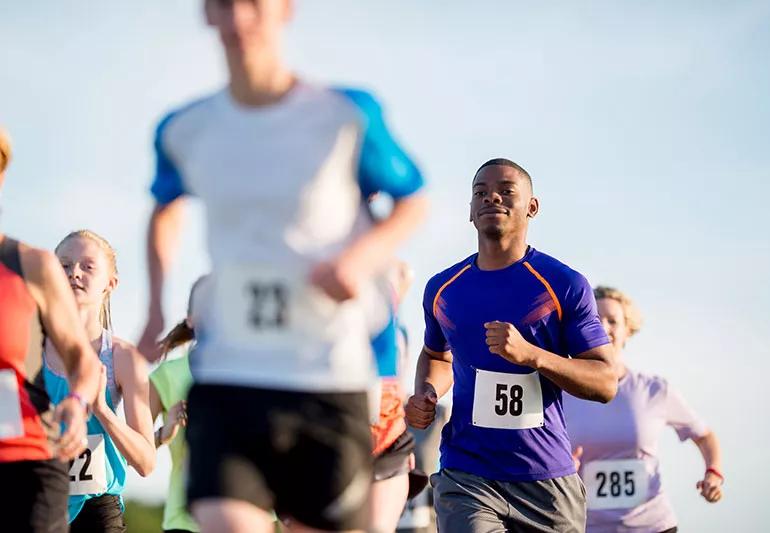Here’s what runners can expect as they return to starting lines

Remember the last time you laced up your running shoes and toed the starting line with others for a race? It was… gosh, could it really have been that long ago?
Advertisement
Cleveland Clinic is a non-profit academic medical center. Advertising on our site helps support our mission. We do not endorse non-Cleveland Clinic products or services. Policy
COVID-19 forced the cancellation of numerous in-person races in 2020 and the first months of this year. The calendar ahead, however, is beginning to fill with opportunities for 5Ks, 10Ks, half marathons and marathons.
After so much time between races, however, you may feel a bit rusty while pinning on a race bib. Exercise physiologist Katie Lawton, MEd, offers these tips for a safe and healthy return to racing.
Much of the advice Lawton offers runners training for their first race can apply to those coming back after a long layoff. Make sure to log the proper training; eat smart and stay hydrated; and get enough sleep ahead of the event.
Going back to the basics that led to previous finish lines will help you get reacquainted with old routines. This approach fits with a return to racing after any hiatus, whether it’s the COVID-19 shutdown or coming back from an injury, illness or pregnancy.
“It makes a difference where you’re starting from,” Lawton explained. “Give yourself time to readjust to racing again.”
That personal record you set on a magical morning two years ago might not be the best target for your first race back. Set a goal that takes into account the amount of time between competitive races.
Advertisement
While virtual events filled the void for many runners during the COVID-19 shutdown and continue to offer challenging opportunities, they’re not quite the same as going head-to-head with fellow runners. Expect the intensity level to ratchet up.
“You’re going to be excited and the adrenaline will be flowing,” says Lawton. “But for most runners, it probably has been a long time since you pushed and tested your limits. Let yourself ease in.”
Don’t expect races to look exactly like they did in 2019. COVID-19 remains a factor even as vaccination numbers rise and restrictions loosen for those who are fully vaccinated.
Look for staggered starts and spaced-out corrals to replace the shoulder-to-shoulder starting chutes of the past. Masks may be required at starting lines and on the course, too. Water stops may be less common, with runners asked to carry their own hydration.
Some races are even asking runners to refrain from spitting during the race to minimize the risk of COVID-19 exposure to other competitors. Check with your race for protocols specific to your event.
The best advice? Take the precautions you need to feel comfortable participating. Peak performance comes with peace of mind.
After months of longing to run an in-person race, the wait is finally over. Savor the moment and soak in the energy and excitement that comes during those pulse-pounding moments before the starting horn sounds.
Then go find that finish line.
Advertisement
Learn more about our editorial process.
Advertisement

Start training with full-body workouts at least six to eight weeks before you hit the slopes

To avoid swimmer’s eye, wear goggles, use eye drops and flush out your eyes with fresh, clean water when irritated

Keep kids safe while they swim by staying vigilant and setting up a safe pool environment

Having a well-rounded, healthy nutrition plan is just as important as staying consistent with your exercise routine

Whether you’re cycling consistently or occasionally, it’s important to have safety essentials like a helmet, shirts with sleeves, eye protection and more

Concussion protocol describes the steps needed to test for concussion and return to play — timelines vary

The mental block is a brain-body disconnect that causes gymnasts to lose their sense of space on flips

A more open conversation on athletes and their mental health needs is overdue

Babies can get congested easily, but you can calm their cough by keeping them hydrated, using nasal drops and running a humidifier

Weight loss may cause loose, sagging skin and muscle loss to your rear

Several conditions, like vitiligo and fungal infection, can cause a loss of pigmentation, leading to white spots or patches on your skin